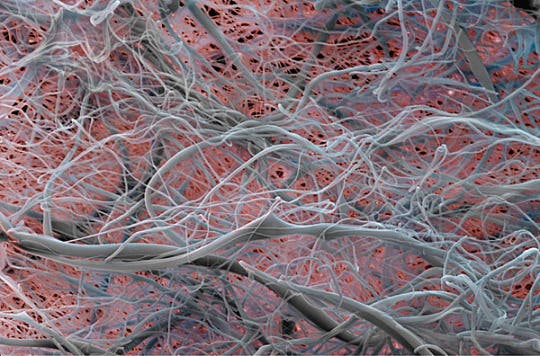
There aren’t blood vessels you’re seeing, but itsy bitsy strands of artificial spider silk. For some years, researchers have been investigating synthesizing spider silk for a variety of very good reasons. Spider silk is the toughest known natural material, and has been explored in its synthetic variety for use as bulletproof vests, synthetic skin, biodegradable water bottles and even computer electronics. These strands presented above, however, serve a different purpose: as a bandaid meant to help regenerate skin and heal wounds. There is a body of folklore dating back at least 2,000 years regarding the potential medical value of webs — for instance, in fighting infections, stemming bleeding, healing wounds and serving as artificial ligaments. In his famous play, A Midsummer Night’s Dream, Shakerspeare wrote: “I shall desire you of more acquaintance, good master cobweb. If I cut my finger, I shall make bold of you.”
Instead of plasters or a gauze, the protein fibers, which are 1,000 times thinner than a human hair, can be laid over a wound for a number of benefits. These don’t cause allergies, are permeable (air can seep through reaching the wound site), and most interestingly the material doesn’t adhere to the skin. This means that once you decide to take it off you don’t have to go through all that excruciating pain when you peel off a plaster. No more ouch!
Was this helpful?



